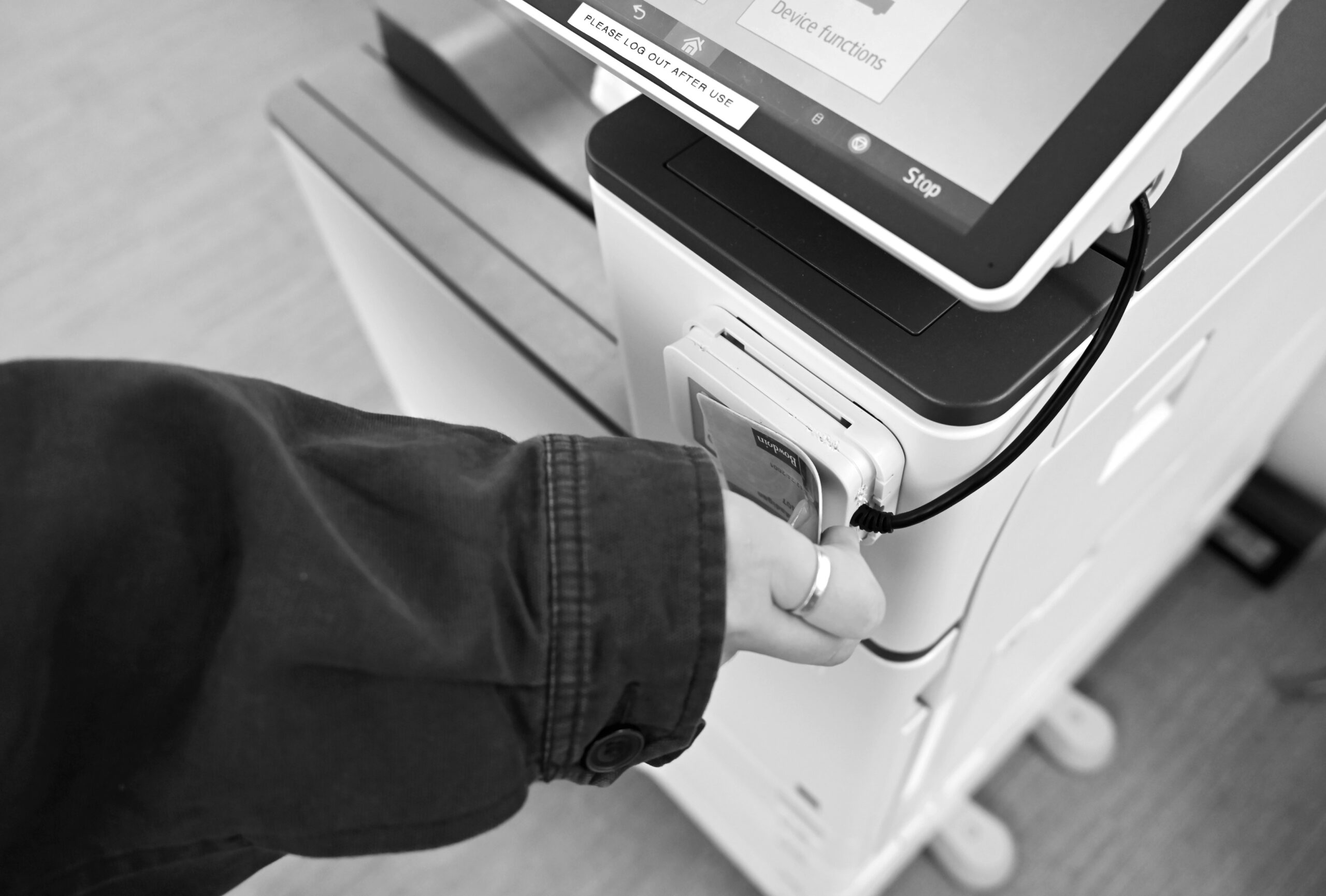New printing software confounds students
September 16, 2022
 Lucas Dufalla
Lucas DufallaOn Monday, Marcus Gadsden ’24 spent his time before class just as he did last year—heading to the library 15 minutes early to print out an assignment. It was a tried-and-true routine he had refined over the past year.
This year, instead of logging onto Pharos UniPrint as usual, Gadsden had a new system to tackle. Starting in July, the College subscribed to PaperCut as its printing provider.
This change marks the first time in 12 years that the College has transitioned to a different printing service. Since 2010, IT has relied on different versions of Pharos—including the Bowdoin-based service “PolarPrint.”
Gadsden is among the wave of students returning to campus confronted by the College’s shift in printing service.
“As soon as I got there, there was a whole new system,” he said. “I ran into a bit of trouble because I had to print out something for class, but I couldn’t figure out how to print, and I had to email my professor.”
Talks among the IT Department about the College’s printing management system began over the summer, when Pharos announced its transition to a subscription-based model.
According to Senior Director of Client Services and Technology Jason Pelletier, who helped select the new system, PaperCut costs the College the same as Pharos and works better for the College’s needs.
Pelletier believes that the new printing service will allow students, faculty and staff to print with more ease than before. Printing with PaperCut is part of the IT Department’s commitment to focus on digital accessibility, he said.
One of PaperCut’s biggest advantages over Pharos UniPrint is its ability to scan the words of documents to create a searchable PDF, Pelletier explained. The new printing system scans these documents to Optical Character Recognition (OCR), which converts the words on paper documents to machine-readable text.
“You’ll be able to scan to more places. You’ll be able to scan to your email, you’ll be able to scan to [Microsoft] OneDrive,” he said.
Along with scanning, PaperCut allows students to release their printing projects from any printer, as opposed to choosing just one.
Karen Jung, head of access and user services at Hawthorne-Longfellow Library, believes that this system will not only be easier for students but will also reduce paper waste, noting the frequency that paper was forgotten at the printers.
In addition to this service change, nearly half of the 240 active printers at Bowdoin are set to be replaced with 110 new printers by the end of the academic year.
“It’s a big, big undertaking. You have to plan for it and make sure you’re making the right decision,” Pelletier said.
Although Pelletier is excited about the change, some students such as Gadsden are confused by the abrupt shift in printing service.
“Why make a new printing system?” Gadsden said. “Personally, I haven’t had any bad experiences with the old one.”
According to Jung, the wave of confused students that talked to librarians about printing at the beginning of the year has decreased significantly in the past week. She attributes the initial confusion to a learning curve.
“There were a lot of questions, but gradually, people have gotten [the application] installed on if they [want to print from] their personal device and have figured out how to use it,” Jung said.
For Jon Sides ’24, the current system is better than the previous one, but he believes it still has room to grow. Sides explained that a few printers have not recognized his OneCard and required him to re-confirm his personal information.
“If my OneCard was recognized and I didn’t have to reenter my information every time I had to print, I would say ‘amazing, incredible, I love it’,” Sides said.
PaperCut has its own feature to encourage the reduction of paper usage. To the right of the printer screen, users can locate their “Environmental Dashboard” which includes information such as the number of trees their printing has killed, as well as the number of trees Bowdoin as a whole has consumed.
“It’s not there to intentionally guilt students,” Pelletier said. “[The features] help students become more aware of their paper usage.”
As of 2:30 p.m. on Thursday, the College consumed 5.2 trees and contributed to the release of 550 kilograms of carbon dioxide and 34,459 bulb hours in paper production since Tuesday, July 12.

Comments
Before submitting a comment, please review our comment policy. Some key points from the policy: